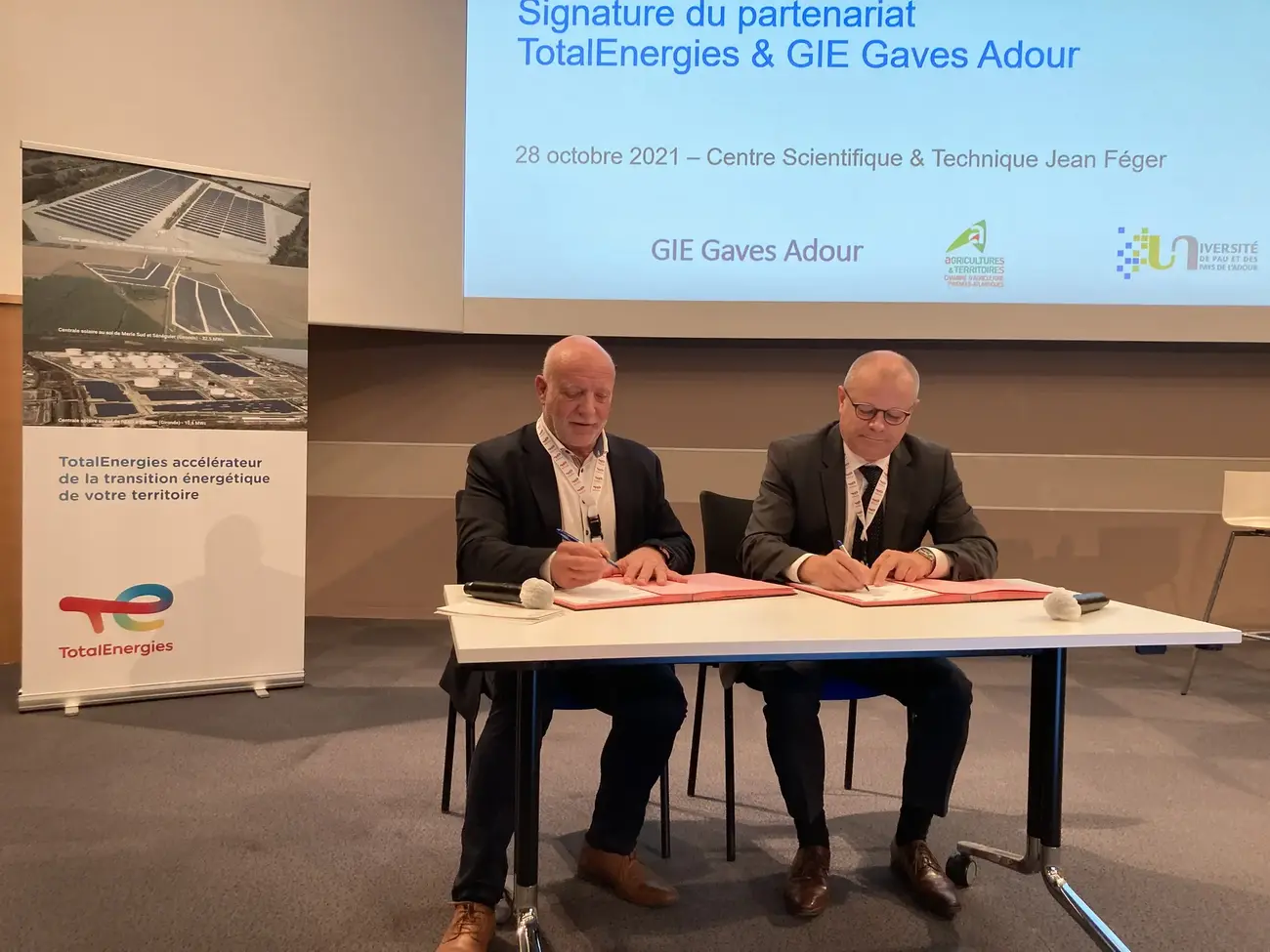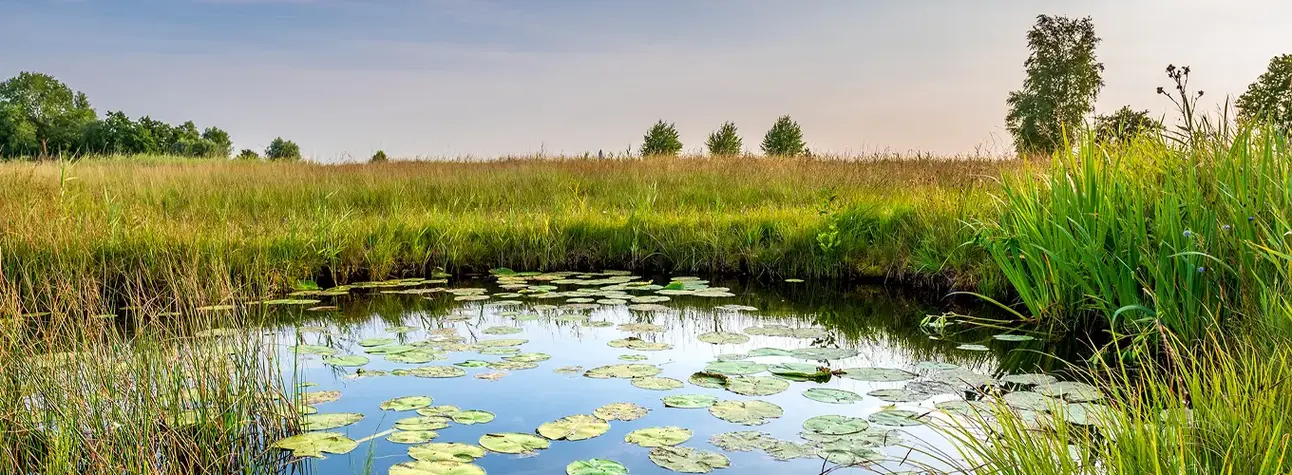Marie Landaburu, Project Lead at TotalEnergies Renewables France, coordinates the development of photovoltaics in Béarn, a strategic region for the Company. What does her job entail? Coordinating technical and environmental studies and dialogue with all the stakeholders. Interview.
Where did your career take you before joining TotalEnergies Renewables France?

Marie Landaburu: I have a Masters’ degree in energy economics and the environment, and I began working for TotalEnergies Renewables France in 2020, at the end of my final year internship. I am currently Photovoltaic Project Lead at the Nouvelle-Aquitaine agency, based in Bordeaux. I work mainly on projects located in the Béarn region. It’s an area I know well, as I’m originally from the Basque Country!! Around thirty members of staff work at the agency, which specializes in all the different professions along the chain: prospection, development, construction, field operations and maintenance.
What does your job actually entail?
M.L: The Béarn is a strategic region for TotalEnergies. We’re developing several photovoltaic projects there, on industrial wasteland, in particular old, rehabilitated gas wells. Around a dozen projects are in progress to date, for a combined power of 17 MWc. The Company has already reconverted several sites around the Lacq field, such as Meillon-Saint-Faust, Carresse-Cassaber or Noguères. These site rehabilitations contribute to the regional energy transition and to TotalEnergies’ net zero objectives. What are my main tasks? Coordinating technical and environmental studies, up to the construction of the power station. Our projects are long term (3 to 5 years on average), as they are subject to construction permits and impact assessments. I also coordinate the whole agreement part with the different stakeholders: local councilors, State services (Prefectures, DDT, DDTM1) and local communities, to ensure that the project is well accepted in the stages before the public inquiry. Generally speaking, when the projects are on industrial wasteland areas, there is rarely any opposition.
Which project do you remember in particular?
M.L: My very first photovoltaic project, in the hills above Arbus in the west of Pau. It was formerly a gas exploration and production site now wasteland rehabilitated by Retia, a TotalEnergies affiliate. Environmental studies began in 2018. To reduce the impact on biodiversity, we preserved the existing compensation ponds and created specific ecological features such as a sandpile to encourage the Little Ringed Plover - a protected bird species - to return to the site, and the creation of hibernacula, piles of stones that are used as shelter by reptiles.
Locally, we have worked hand-in-hand with the team from the local council, and organized several public duty periods, in close liaison with the DDTM, to present the challenges of the project, its extent and impacts, to the local community. The power station is currently under construction and will represent 2.9 MWc, i.e. the equivalent electricity consumption (excluding heating) of around 2,500 inhabitants. It will comprise 5,000 fixed photovoltaic panels, all South facing.
Is the Béarn region a "land of preference" for photovoltaic power?
M.L: Yes it is. Nouvelle-Aquitaine is currently the leading region in France for installed photovoltaic power, and the Béarn is a wonderful “playground” that lends itself to the deployment of new power stations. The region already has numerous assets and generates 63 MWc to date, the equivalent electricity consumption (excluding heating) of 50,000 people. This dynamic can be explained by an incentivizing legislation: the State effectively encourages the reconversion of industrial wasteland as part of its National Low Carbon Strategy (SNBC). So it’s logical to focus our efforts on this sector, given that TotalEnergies has always been very present in the Béarn region through its former gas activity.
Do you work with the local Béarn teams from TotalEnergies?
M.L: Yes, in particular we work with the Platform for Experimental Research in Lacq (PERL) that is linked to the TotalEnergies Site in Pau, as regards challenges related to biodiversity. A comparative study was led by an engineer from the PERL on the development of soil quality on the Arbus site, between the end of gas production, the rehabilitation phase, and the construction of the future photovoltaic power station. The Pangea supercomputer and the labs at the Jean Feger Scientific and Technical Center in Pau (CSTJF) now also have activities related to solar power, such as the use of satellite data or fine solar irradiance modeling, that help optimize the design of photovoltaic facilities, in particular by using bifacial solar panels for improved adaptation to the environment. This type of project is more complex, as the irrigation lakes have significant tidal ranges, between 7 and 10 m, unlike quarry lakes, where the water depth barely varies. Their expertise means that aspects such as the impact of panels on water quality can be studied for our Flotovoltaic projects on irrigation lakes. For the Company, this type of project brings ideas for the future, as the government is encouraging us to develop solar projects on anthropized water bodies. In this context, we recently confirmed a partnership with irrigators in the Pyrénées Atlantiques.
What are the other avenues for the future?
M.L: We are actively looking into collective auto-consumption projects. The idea is to create local loops that enable inhabitants and companies to directly consume the electricity produced by our power stations, through electricity purchase contracts. We have not yet launched any projects of this type in Béarn however; a potential candidate is being studied in the Landes d’Armagnac federation of municipalities. Named Néela, the project is co-developed with the federation of municipalities, the local SEM and the Region. It embodies our determination to develop a collective approach, and to be honest, I hope to get the chance to run a similar project in the Béarn region!
[1] French departments for the sustainable development of coastal and inland regions

Reconciling agriculture and green energy production
At the CSTJF in Pau and the Platform for Experimental Research in Lacq (PERL), several teams of researchers are working on future agrivoltaics. They study the impact of solar panels on soil and crops, and collect hundreds of items of data that are used to populate plant growth models and algorithms for controlling photovoltaic panels.

Innovative with a societal slant - floating solar panels
The production of renewable solar energy on irrigation lakes has been kick started by a partnership agreement signed at the CSTJF between TotalEnergies and an association of farmers from the Béarn region.

Our commitment to biodiversity
Fully aware of the environmental impact of its activities, TotalEnergies has incorporated the United Nations’ Sustainable Development Goals (SDG) into its environmental policy. With "Ambition Biodiversité", the Company has kicked off an ambitious and determined strategy that aims to both meet the highest environmental standards and play a proactive role in preserving all ecosystems.